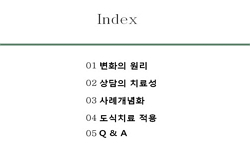Chinese economy has achieved remarkable growth in terms of quantity, but Chinese economy is still immature in terms of quality, and there exist various problems in many fields of economic structure and operating system. Chinese economy, which has achi...
http://chineseinput.net/에서 pinyin(병음)방식으로 중국어를 변환할 수 있습니다.
변환된 중국어를 복사하여 사용하시면 됩니다.
- 中文 을 입력하시려면 zhongwen을 입력하시고 space를누르시면됩니다.
- 北京 을 입력하시려면 beijing을 입력하시고 space를 누르시면 됩니다.
https://www.riss.kr/link?id=A106029351
-
저자
이기영 (세종대학교)

- 발행기관
- 학술지명
- 권호사항
-
발행연도
2019
-
작성언어
Korean
-
주제어
중국경제 ; 경제불확실성 ; 실물경제 ; 공통요인 ; 충격반응분석 ; China economy ; Economic uncertainty ; Real economic ; Common factor ; Impulse response analysis
-
등재정보
KCI등재
-
자료형태
학술저널
-
수록면
119-150(32쪽)
-
KCI 피인용횟수
3
- DOI식별코드
- 제공처
-
0
상세조회 -
0
다운로드
부가정보
다국어 초록 (Multilingual Abstract)
Chinese economy has achieved remarkable growth in terms of quantity, but Chinese economy is still immature in terms of quality, and there exist various problems in many fields of economic structure and operating system. Chinese economy, which has achieved rapid economic growth in the meantime, now reaches its limitation of growth model and engine and faces a new point of time that can not guarantee sustainable growth. As China enters this period called New Normal, the Chinese government is moving forward through the transition of growth engine and economic structure, etc., but due to the political and economic characteristics of China, it is expected to take a considerable time for the transition of this growth engine and economic mechanism to be successful, and for uncertainty to increase significantly during this period, and the increase of uncertainty is likely to be sustained for not temporary but considerable period of time, so in the analysis of Chinese economy in the future, it is necessary to study considering the existence and the change of this uncertainty.
This study intends to measure the uncertainty of Chinese economy based on Jurado et al (2015) basically and to understand the effect of the change of uncertainty of Chinese economy on the real economy of China. However, this study does not cite the method of Jurado et al (2015) as it is, but intends to estimate the uncertainty specified to Chinese economy by modifying and differently weighing the variable categories and variable items in accordance with the structure and reality of Chinese economy, and to confirm the effect on the real economy through Impulse Response and Variance Decomposition. In addition, in confirming the real economy, not only it tests some of the single variables that represent the real economy, but also it intends to extract two common factors of Economic Activity and Inflation, which represent the Chinese real economy, and to confirm its response to the uncertainty.
참고문헌 (Reference)
1 이기영, "중국 금융경제의 홍콩 대만에 대한 영향력 분석" 중국연구소 71 : 215-241, 2017
2 김민기, "중국 경제 불확실성 측정과 중화권 주식 시장 변동성에 대한 예측력" 금융지식연구소 16 (16): 55-83, 2018
3 김웅, "불확실성이 경제성장에 미치는 영향" 한국국제경제학회 18 (18): 129-151, 2012
4 芦丽静, "经济不确定性对最终消费影响的地区差异性研究——基于省级面板数据的比较分析" 2 : 106-114, 2016
5 王义中, "宏观经济不确定性、资金需求与公司投资" 2 : 4-17, 2016
6 章上峰, "中国宏观经济不确定性的统计测度研究" 30 (30): 14-19, 2015
7 鲁晓东, "不确定性与中国出口增长" 9 : 39-54, 2017
8 Schwert, G. W., "Why does stock market volatility change over time?" 44 (44): 1115-1153, 1989
9 Bachmann, R., "Uncertainty and economic activity: Evidence from business survey data" 5 (5): 217-249, 2013
10 Whitelaw, R. F., "Time variations and covariations in the expectation and volatility of stock market returns" 49 (49): 515-541, 1994
1 이기영, "중국 금융경제의 홍콩 대만에 대한 영향력 분석" 중국연구소 71 : 215-241, 2017
2 김민기, "중국 경제 불확실성 측정과 중화권 주식 시장 변동성에 대한 예측력" 금융지식연구소 16 (16): 55-83, 2018
3 김웅, "불확실성이 경제성장에 미치는 영향" 한국국제경제학회 18 (18): 129-151, 2012
4 芦丽静, "经济不确定性对最终消费影响的地区差异性研究——基于省级面板数据的比较分析" 2 : 106-114, 2016
5 王义中, "宏观经济不确定性、资金需求与公司投资" 2 : 4-17, 2016
6 章上峰, "中国宏观经济不确定性的统计测度研究" 30 (30): 14-19, 2015
7 鲁晓东, "不确定性与中国出口增长" 9 : 39-54, 2017
8 Schwert, G. W., "Why does stock market volatility change over time?" 44 (44): 1115-1153, 1989
9 Bachmann, R., "Uncertainty and economic activity: Evidence from business survey data" 5 (5): 217-249, 2013
10 Whitelaw, R. F., "Time variations and covariations in the expectation and volatility of stock market returns" 49 (49): 515-541, 1994
11 Palu.M.Jones, "The time-varying correlation between uncertainty, output, and inflation: Evidence from a DCC-GARCH model" 118 (118): 33-37, 2013
12 Engel, R. F., "The spline-GARCH model for low frequency volatility and its global macroeconomic causes" 21 (21): 1187-1222, 2008
13 Bloom, N., "The impact of uncertainty shocks" 77 (77): 623-685, 2009
14 Marguering, W., "The economic value of predicting stock index returns and volatility" 39 (39): 407-429, 2004
15 Campbell, J. Y., "Stock returns and the term structure" 18 (18): 373-399, 1987
16 Chau, F., "Political uncertainty and stock market volatility in Middle East and North African (MENA) countries" 28 : 1-19, 2014
17 Blanchard O., "Perils of uncertainty: (nearly) nothing to fear but fear itself"
18 Stock, J., "Oxford Handbook on Economic Forecasting" 2011
19 Engel, R. F., "On the economic sources of stock market volatility" 2008
20 Bernanke, B., "Monetary policy in a data-rich environment" 50 (50): 525-546, 2003
21 Fernald, J. G., "Monetary policy effectiveness in China: Evidence from a FAVAR model" 49 (49): 83-103, 2014
22 Bernanke, B., "Measuring the effects of monetary policy: a factor-augmented vector autoregressive (FAVAR)approach" 120 (120): 387-422, 2005
23 Baker, S., "Measuring economic policy uncertainty" 131 (131): 1593-1636, 2016
24 Jurado, K., "Measuing Uncertainty" 105 (105): 1177-1216, 2015
25 Adjasi, C. K., "Macroeconomic uncertainty and conditional stock-price volatility in frontier African markets: Evidence from Ghana" 10 (10): 333-349, 2009
26 Baker, M., "Investor sentiment and the cross-section of stock returns" 61 (61): 1645-1680, 2006
27 Davis, N., "Inflation and output as predictors of stock returns and volatility: international evidence" 13 (13): 693-700, 2003
28 Stock, J., "Forecasting inflation" 44 (44): 293-335, 1999
29 이기영, "FAVAR모형을 이용한 중국 통화정책의 효과연구" 한국동북아경제학회 29 (29): 21-49, 2017
30 Zakaria, Z., "Empirical evidence on the relationship between stock market volatility and macroeconomic volatility in Malaysia" 4 (4): 61-71, 2012
31 Breed, W., "Economic significant of predictable variables in stock index returns" 44 (44): 1177-1189, 1989
32 Liu, L., "Economic policy uncertainty and stock market volatility" 15 : 99-105, 2015
33 Paye, B. S., "Déjà vol’: Predictive regressions for aggregate stock market volatility using macroeconomic variables" 106 (106): 527-546, 2012
34 Stock, J., "Diffusion indexes" NBER 1998
35 Bai, J., "Determining the number of factors in approximate factor models" 70 (70): 191-221, 2002
36 Nakamura, E., "Are Chinese Growth and Inflation Too Smooth?" 8 (8): 113-144, 2014
37 Newey, W. K., "A simple, positive semi-definite, heteroskedasticify and autocorrelation consistent covariance matrix" 55 (55): 703-708, 1987
동일학술지(권/호) 다른 논문
-
中国女性消费者的民族中心主义、 产品典型性及购买意向之间的关系硏究 -以韩国化妆品为例-
- 한중사회과학학회
- 马俊(Ma Jun)
- 2019
- KCI등재
-
- 한중사회과학학회
- 김인식
- 2019
- KCI등재
-
- 한중사회과학학회
- 장지아
- 2019
- KCI등재
-
- 한중사회과학학회
- 邵欣欣(Shao, xinxin)
- 2019
- KCI등재
분석정보
인용정보 인용지수 설명보기
학술지 이력
| 연월일 | 이력구분 | 이력상세 | 등재구분 |
|---|---|---|---|
| 2026 | 평가예정 | 재인증평가 신청대상 (재인증) | |
| 2020-01-01 | 평가 | 등재학술지 유지 (재인증) |  |
| 2017-01-01 | 평가 | 등재학술지 유지 (계속평가) |  |
| 2013-01-01 | 평가 | 등재학술지 유지 (등재유지) |  |
| 2010-01-01 | 평가 | 등재학술지 선정 (등재후보2차) |  |
| 2009-01-01 | 평가 | 등재후보 1차 PASS (등재후보1차) |  |
| 2007-01-01 | 평가 | 등재후보학술지 선정 (신규평가) |  |
학술지 인용정보
| 기준연도 | WOS-KCI 통합IF(2년) | KCIF(2년) | KCIF(3년) |
|---|---|---|---|
| 2016 | 0.39 | 0.39 | 0.41 |
| KCIF(4년) | KCIF(5년) | 중심성지수(3년) | 즉시성지수 |
| 0.35 | 0.34 | 0.553 | 0.31 |




 KCI
KCI KISS
KISS





